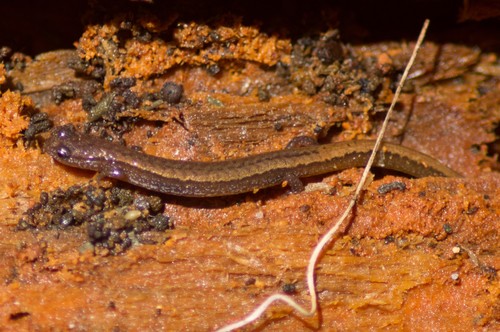Dwarf salamander
A species of Brook salamander, Also known as Dwarf four-toed salamander, Coastal plain dwarf salamander Scientific name : Eurycea quadridigitata Genus : Brook salamander
Dwarf salamander, A species of Brook salamander
Also known as:
Dwarf four-toed salamander, Coastal plain dwarf salamander
Scientific name: Eurycea quadridigitata
Genus: Brook salamander
Content
Description People often ask General Info
Description
The dwarf salamander (Eurycea quadridigitata) is a species of salamander native to the southern United States, from North Carolina to Oklahoma, south to Texas along the Gulf of Mexico states to northern Florida. Some sources refer to it as the four-fingered manculus, dwarf four-toed salamander, or the Florida dwarf salamander.
People often ask
General Info
Lifespan
5-7 years
Diet
Dwarf salamander predominantly feeds on small aquatic invertebrates such as mayfly larvae and microcrustaceans. This salamander selectively preys, preferring prey of size commensurate to its mouth gape.
Appearance
Dwarf salamander is a small salamander boasting slender bodies and long tails. With usually smooth skin, their hue varies from translucent gray to brown with some individuals exhibiting faint patches or strip patterns. The creature also features a signature trait of four toes on each foot unlike most salamanders that have five. Both males and females are similar in appearance, with no significant differences.
Behavior
Dwarf salamander is a nocturnal, semi-aquatic species primarily demonstrating solitary behavior. It engages in opportunistic foraging for small invertebrates. Typical of salamanders, dwarf salamander can regenerate lost limbs, demonstrating unique survival adaptation. It marks its damp woodland or marsh territories via chemical cues.
Population
Stable
Scientific Classification
Phylum
Chordates Class
Amphibians Order
Salamanders Family
Lungless salamanders Genus
Brook salamander Species
Dwarf salamander 